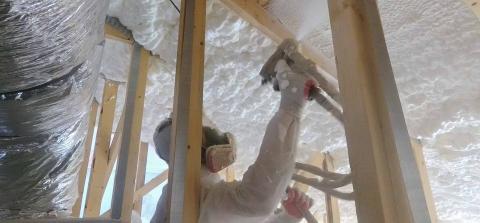
Vented to Unvented Attic
Converting an attic from vented to unvented can reduce utility costs while improving comfort, indoor air quality, and durability.
Vented to Unvented Attic Background

An unvented attic is air sealed and insulated at the sloped roofline instead of at the attic floor. As a result, the attic becomes part of the conditioned space of the home. This protects heating and cooling equipment and ductwork located in attic from temperature extremes so it will last longer and operate more efficiently. An unvented attic also helps reduce potential moisture problems by keeping out humid outside air and wind-driven rain. As an added benefit, the conditioned attic can provide climate-controlled storage space or could potentially be converted to bonus living space if the structural support is in place.
Tips to Sell Quality Installed Home Improvements
Home Improvement Expert is a valuable tool for organizations committed to quality installed work. The following tips help optimize the value of this tool when selling home improvements:
Trust Matters: Inform homeowners how your work conforms to this world-class expert guidance. Recommend they visit the DOE website as evidence these are indeed official best practices.
Knowledge Matters: Take advantage of the Building America Solution Center as a resource for becoming an expert on these projects.
Clarity Matters: Tell prospective clients to contrast your expert-recommended best practices with other contractors.
Value Matters: Advise prospective clients to insist other bids also include these checklists to ensure equivalent quality work.
Message Matters: Showcase on your website and marketing materials that your company uses the highest quality best practices specified on HIE Checklists.
Experiences Matter: Provide visual evidence contrasting the difference between poor and high quality work such as infrared images; pre- and post-energy bills; short and long warranties; and simple charts and graphics depicting performance advantages.